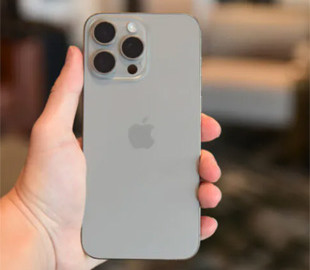
Have you ever wondered how Apple tests the water resistance of its smartphones? If so, you may now have the answers to all your questions, as popular tech blogger Marques Brownlee visited the lab where the company conducts tests to ensure devices live up to their IP ratings.
The current iPhone 15 models have an IP68 protection class. The first number in this marking (6) means that the phones are dustproof, and the second (8) – that the device can be immersed in fresh water to a depth of 6 m, and it will survive in such conditions for up to 30 minutes.
Marquez Brownlee posted a tweet describing a series of tests that Apple conducts in a room filled with various devices that test a smartphone for water resistance. In the first test, the iPhone is placed on a special plate, and water falls on the device, simulating rain. At the same time, it does not exert pressure, so if the device passes this test, it receives an IPX4 rating.
I recently got to visit some Apple labs where they durability test new iPhones before they come out, and learned a few things (THREAD)
#1: Have you actually seen how they water test phones for IP ratings? (video) pic.twitter.com/Qh3hfmlmdn
— Marques Brownlee (@MKBHD) May 29, 2024
The next test is more difficult, using a constant stream of low-pressure water that hits the iPhone from all sides to determine if it can be rated IPX5. Then the smartphone is watered “literally from a fire hose” under high pressure. If the iPhone passes this test, its protection rating will increase to IPX6. The final test involves locking the iPhone in a container and increasing the pressure to see if it can withstand being submerged underwater for an extended period of time. If this test is passed flawlessly, the iPhone receives an IPX8 rating. If it successfully passes the dust test, the phone gets an IP68 rating.
#2: There's an entire room of machines for water and ingress testing
Level 1: A drip tray simulating rain, no real pressure. IPX4
Level 2: A sustained, low-pressure jet spray from any angle. IPX5
Level 3: High pressure spray from a literal firehose. IPX6
Level 4: Locking the… pic.twitter.com/5R38I6QVmW
— Marques Brownlee (@MKBHD) May 29, 2024
Brownlee also showed in the video the apparatus that Apple uses to conduct drop tests. The iPhone under test can fall at different angles and land on different surfaces. A high-speed camera is used to record the fall.
#3: Apparently Apple has also bought and programmed and industrial robot to be their own drop test machine – to simulate hundreds of different drop angles onto different materials
Then they hit it with some ultra bright lights and a high speed camera to watch them back in… pic.twitter.com/EsNJbVQrbO
— Marques Brownlee (@MKBHD) May 29, 2024
Another test includes testing the iPhone for endurance – the device violently shakes the smartphone, simulating a ride in the subway or riding a motorcycle. But it's worth noting that despite this test, Apple's support page states: “Exposure of the iPhone to high-amplitude vibrations in certain frequency ranges, especially those generated by powerful motorcycle engines, may degrade the performance of the camera system”.
#4 Ok this one was hard to capture on camera – it's literally shaking everything at computer-controlled frequencies. They can program in the frequency of a certain motorcycle engine or subway car to simulate how well a device will hold up to sustained exposure to that frequency… pic.twitter.com/K981NzQhhk
— Marques Brownlee (@MKBHD) May 29, 2024
The testing process is surprisingly interesting, and most importantly – necessary in order to verify the strength of the device and its ability to withstand the various conditions to which it is subjected. The first iPhone series to receive the IP67 protection class were the iPhone 7 and iPhone 7 Plus.

